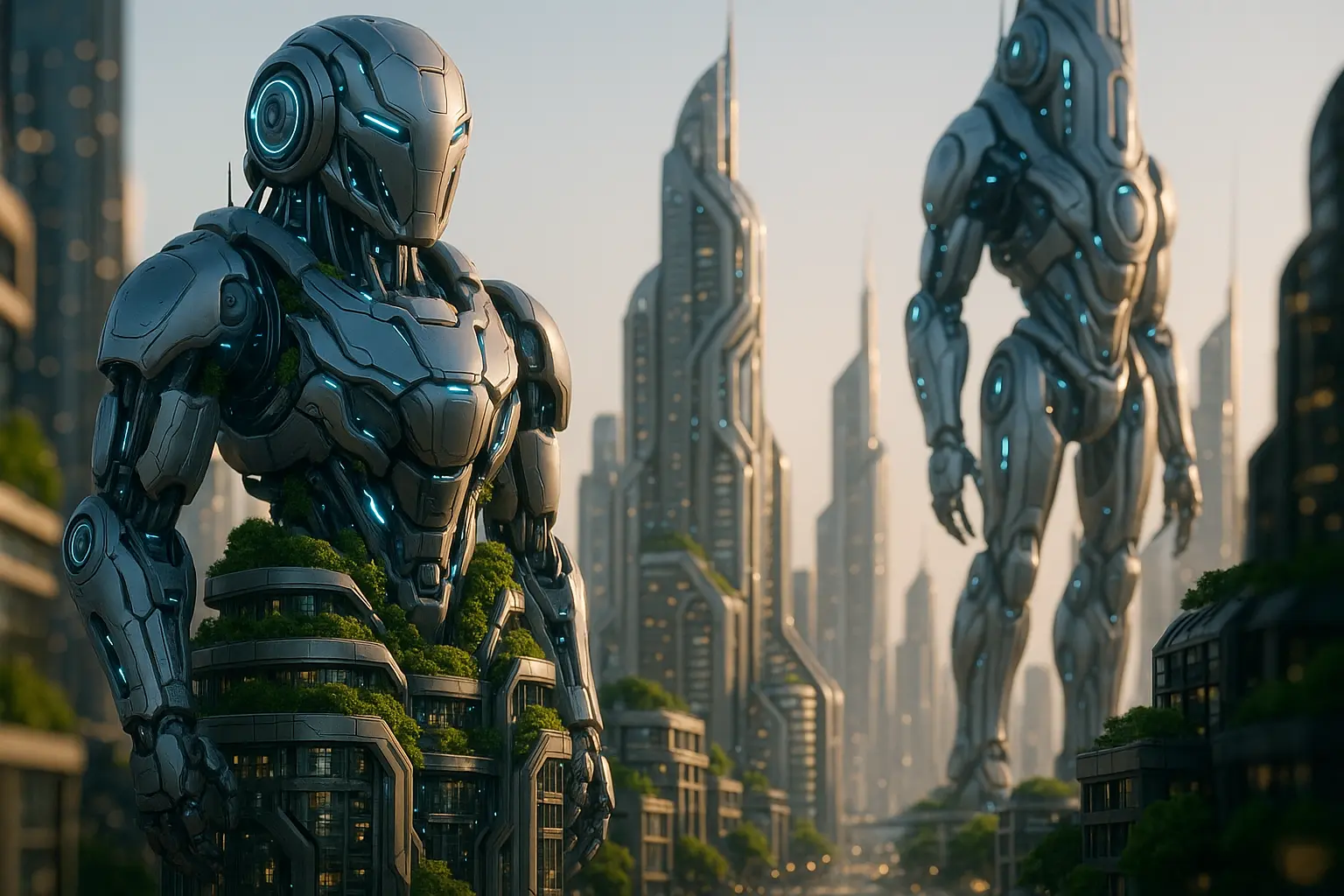The landscape of architecture is ever-evolving, and in recent years, it has been revolutionized by the integration of robotics. As we stride confidently into a world where technology shapes the way we live, the intersection between architecture and robotics promises to transform how we conceive and construct our built environments. Architects and construction professionals are increasingly leveraging digital tools and technologies, pushing the boundaries of what is possible in design and fabrication. Our exploration dives into this exciting frontier, where robots play a pivotal role in reshaping the industry and our future.
Reimagining Design: Architects and Robotics
The relationship between architects and robots is becoming symbiotic. As we embrace the digital age, the role of the architect is shifting from traditional design to a more integrated approach involving robotic systems. This transformation is redefining creativity, allowing us to craft complex structures that were once deemed unbuildable. Robots are not merely tools; they are partners in the creative process, offering precision and efficiency that manual methods cannot match.
Design processes have undergone a significant shift. With the power of robotic assistance, we are no longer constrained by the physical limitations that once dictated form and function. Architects can now explore innovative geometries and fluid forms, sculpting spaces that defy traditional conventions. This newfound freedom is invigorating the industry and inspiring a new generation of designers to push the boundaries of what buildings can be.
Furthermore, robotic technologies help us address sustainability challenges. By optimizing material usage and minimizing waste, robots enable us to build greener and more efficient structures. As architects, we can make informed decisions about resource allocation and energy efficiency, contributing to a more sustainable future.
Revolutionizing Construction with Robotics
The construction industry is embracing a technological renaissance, with robotics at its core. As we look toward the future, robots are becoming indispensable allies in the building process, offering unparalleled precision and speed. Robotic systems can perform tasks ranging from bricklaying to 3D printing, transforming the way we build.
With the advent of robotic construction, we can tackle complex projects with ease. Robots can work tirelessly in hazardous environments, carrying out tasks that would be dangerous or labor-intensive for human workers. This not only enhances safety but also increases efficiency, reducing the time and cost required to bring ambitious projects to life.
The industry is witnessing a paradigm shift, moving from labor-intensive practices to automated workflows. By integrating robots into our construction processes, we are poised to overcome the challenges of urbanization and demand for architectural innovation. Robotic systems are setting new standards for quality and consistency, enabling us to build quickly and accurately, while maintaining meticulous attention to detail.
Digital Fabrication: Bridging the Gap
Digital fabrication is bridging the gap between design and construction, allowing us to translate innovative concepts into reality with ease. As we embrace robotic technologies, architectural projects are becoming increasingly dynamic and adaptive. Digital tools provide the flexibility to explore new technologies and materials, empowering us to create bespoke solutions tailored to specific site conditions and client needs.
By harnessing the power of digital fabrication, we can execute complex designs with precision and efficiency. Robots act as the bridge between the digital and physical realms, transforming virtual models into tangible structures. This seamless transition from concept to reality allows for greater creative expression and experimentation, breathing life into architectural visions.
Moreover, digital fabrication fosters collaboration and innovation within the industry. Architects, engineers, and builders can work together more closely, sharing information and ideas to optimize the design and construction process. This collaborative approach not only enhances the quality of the final product but also accelerates project timelines, ensuring that we meet the demands of modern society.
A Technological Era: Embracing the Future
As we move forward, the integration of technology in architecture is inevitable. The rise of robotics represents a shift towards a more efficient, sustainable, and innovative industry. By embracing these advancements, we are paving the way for a future where buildings are not just structures but living systems that adapt to our needs.
Technologies like artificial intelligence and machine learning are empowering robots to become smarter and more autonomous, able to make decisions and perform tasks with minimal human intervention. This opens up new possibilities for architectural innovation, allowing us to create spaces that are dynamic and responsive to changing conditions.
As we embrace this technological era, we must also address the ethical and societal implications of robotic construction. By fostering an open dialogue and collaboration between stakeholders, we can ensure that these advancements benefit society as a whole, leading to a more equitable and inclusive future. Together, we can harness the power of robots to enhance the built environment and improve the quality of life for all.
The fusion of architecture and robotics heralds an exciting chapter for the industry. As we reimagine the future, robots will continue to play an integral role in shaping the way we design and build our world. This harmonious collaboration between humans and machines promises to elevate our craft, delivering buildings that are not only functional but also awe-inspiring. Let us embrace this technological revolution with open minds and creativity, as we strive towards a future where innovation and sustainability go hand in hand. Together, we can build a world that reflects our aspirations and enhances the quality of life for generations to come.
FAQ
What role will robotics play in the future of architecture?
Robotics will revolutionize architecture by automating construction processes, enhancing precision, and increasing efficiency. Robots can perform repetitive tasks, reducing human error, and allowing architects to focus on more innovative designs.
How will robotic technology impact the design process in architecture?
Robotic technology will enable architects to explore complex geometries and unconventional structures that were previously difficult to achieve. With advanced robotics, architects can push the boundaries of creativity and bring futuristic designs to life.
Will robotic construction replace human workers in architecture?
While robotics will automate many tasks, the human element will remain crucial in architectural design and decision-making. Robots will augment human capabilities, allowing workers to focus on creative and strategic aspects rather than manual labor.
How can robotics contribute to sustainable architecture?
Robotics can aid in sustainable architecture by optimizing material usage through precision and minimizing waste. Robots can also help construct energy-efficient buildings by integrating advanced technologies and materials during the building process.
What challenges does the integration of robotics in architecture face?
The integration of robotics in architecture faces challenges such as high initial costs, the need for specialized training, and potential resistance from industry professionals. However, as technology advances and becomes more accessible, these challenges are expected to diminish.



